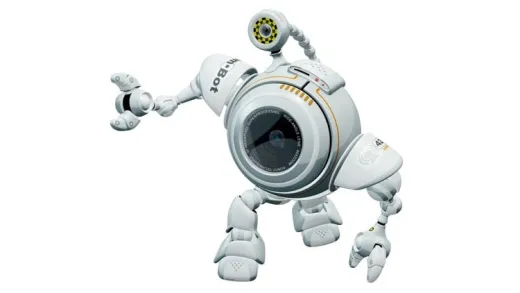Brief Summary
This course is all about getting hands-on with digital electronics! Perfect for beginners, you’ll build circuits and program microcontrollers like Arduino and PIC. It's super fun and opens up all sorts of career paths or hobbies!
Key Points
-
Build digital electronic circuits.
-
Learn to program microcontrollers.
-
Connect your projects to the real world.
Learning Outcomes
-
Understand digital electronics and microcontroller programming.
-
Build practical electronic circuits.
-
Gain skills for robotics and automation.
About This Course
Over 14,000 enrolled! Open doors to careers and hobbies and have fun while learning digital electronics!
Updated January 2023
Building on the knowledge you gained in the Analog Electronics module opens even more doors to diverse careers and hobbies. Think about how many industries / businesses / hobbies that involve computers or computer control. Even automobiles are chock full of digital electronics now. All of this involves digital electronics, and you want in on it today. In this module 2 course, you will build digital electronic circuits, use and program microcontrollers like the PIC and Arduino, and connect to the real world with them. You'll need a good understanding of basic electronics (i.e., you've completed the Robotics: Learn by building, module I), some basic math skills, a computer, and that's it!
With over 14,000 students enrolled and more than 500 five star ratings, students aged 8 to 60+ have enjoyed the course and its projects.
No prior knowledge of digital electronics or programming is required, and yet by the end of this course you'll have built functioning digital electronic circuits like a digital memory, and programmed microcontrollers which are basically a computer on a microchip. You will connect these to the real world for home automation and of course, controlling your robots. All courses have captions for the hearing impaired.
Course materials:
You will need the analog electronic parts and a breadboard, which you can purchase as an accompanying kit (i.e., the Analog Electronics Kit from module I) or provide your own.
You will also need the digital electronics kit which again you can purchase as an accompanying kit or provide your own parts. The first lesson is a walk-through of what is in the kit and acts as a parts list for this module.
This series of "Robotics: Learn by building" modules has an end-goal focus on the diverse field of robotics. In module I we learned the basics of electricity and electronics. In this module II you further develop your knowledge and skills to include digital electronics and practice your skills on real-life digital components.
This course is the prerequisite for the module III course where you'll learn robotic drive systems and physics, and gain a wide variety of skills in prototyping so you can actually build your own robots and manufacture your own parts. In module IV, you'll culminate all you've learned so far as you build a 3D printer from scratch, hook it up to a desktop computer and make your own plastic parts. The 3D printer is, in effect, a robot which you can then use to make parts for your other robot designs. In module V you can take your robot design and construction skills to the next level with a hands-on approach to autonomous robotic systems: learning about various sensors to know where you are and what your robot is doing, GPS navigation, basic artificial intelligence, powerful microchips known as FPGA's where you literally design a custom circuit on the chip, vision systems and more.
Lesson overview:
In this course we'll be covering:
What is digital?
Binary & Hexadecimal system and ASCII
Analog to digital and digital to analog conversion
Logic gates and you'll make your own RAM
Digital Addressing/demultiplexing
Microprocessors & microcontrollers - what are they?
Programming & using PIC microcontrollers to:
-display information on an LCD display
-Read both digital and analog inputs
-PWM control a DC motor and servo motor
-Read keypad matrixes
-control LED displays
-writing to flash memory on board for remote systems
What is Arduino?
-using Arduino for all of the PIC projects above, as well as using full-colour TFT touch screens
Building our mobile robot
Giving our mobile robot a "brain"
Ultrasonics and ultrasonic radar / external sensing
Programmable IR remote
and more!
Design and construct digital electronic circuits, use microcontrollers to control real world items like robots you build!
You will be able to program microcontrollers like the PIC and Arduino.






Scott W.
Excellent course.